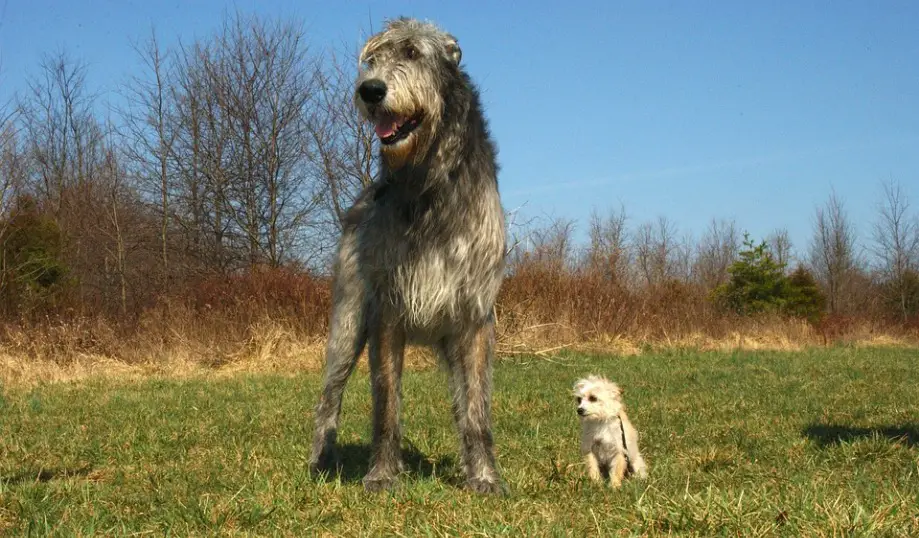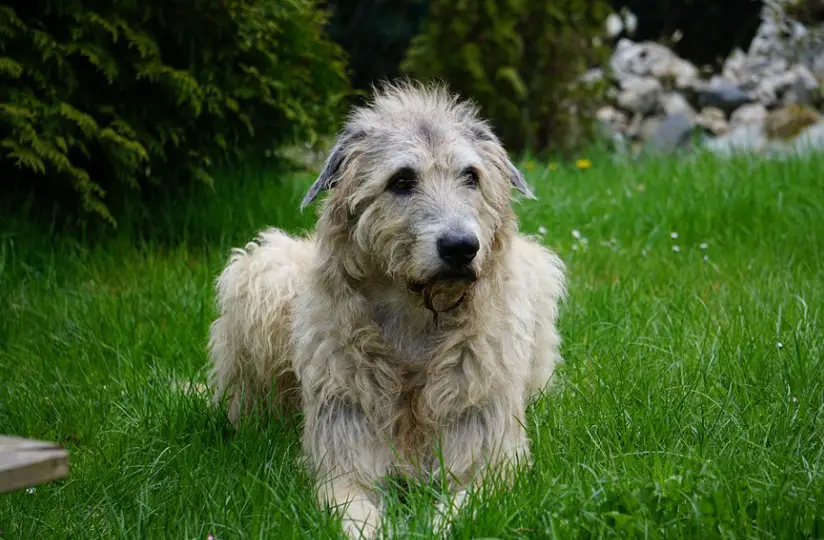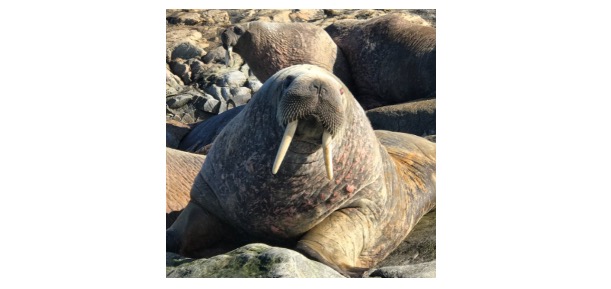Table of Contents
Wolfhound: All You Need To Know
A Wolfhound is the domestic dog breed that belongs to the kingdom of Animalia, phylum Chordata, and class Mammalia. Its genus is Canis, and its species is C. lupus. Its length is up to 76 to 86 cm, and it weighs about 50 to 55 kg. It lives in a domesticated habitat, with a lifespan of up to 6 to 10 years.

What is Wolfhound?
A wolfhound is a big domestic dog breed that was employed as a hunting dog in the past. Wolfhounds, known for their enormous size, were employed to track down game by using their speed. They’re also known as security dogs and come in a variety of current breeds, including the Irish Wolfhound.
Irish Wolfhounds are one of the tallest dog breeds, measuring 30-34 inches (76-86 cm) at the withers and weighing up to 120 pounds (54.5 kg). They are the largest galloping hounds, with coarse, medium-length overcoats in a variety of hues, including grey, brindle, and fawn and wheaten.
Wolfhounds are powerful and slender dogs. Because of their resemblance to Greyhound-like breeds, they are also very nimble for their size. As a result, despite their massive frames, they are very light. They have lengthy torsos and a long neck, which they usually wear with their heads held high and proud.

Wolfhound-like canines have been employed as hunting hounds for ages, dating back to ancient Rome and the 6th century usage by ancient Irish peoples. Only monarchs and noblemen in Ireland kept wolfhounds. The number allowed was controlled, with higher-status individuals receiving more.
Following the disappearance of large game in Ireland in the 1700s, the breed was nearly extinct before being resurrected from a few surviving wolf dogs. The Irish Wolfhound Club was formed in 1885 by Captain George Augustus Graham, and the breed was ultimately recognised by the American Kennel Club in 1897 and the English Kennel Club in 1925. The breed is now fairly popular, ranking 77th out of 155 breeds approved by the American Kennel Club.
Wolfhound: Temperament as Pets
Wolfhounds are often one-of-a-kind creatures, with personality traits varying more from dog to dog than from breed to breed. They are not aloof, though, and are usually highly attentive and alert. They are also timid and cautious, if not a bit wary of strangers and other animals.
Despite their size and strength, they are rarely destructive as long as they receive reasonable exercise. They are known to shed somewhat, but not excessively, and only require a little grooming, such as weekly brushing and occasional bathing.
Despite their independence and intellect, wolfhounds establish deep ties with their family and are unhappy when they are frequently left alone. They will establish similar bonds with other pets they share their home with, notably dogs. Wolfhounds are typically placid and polite to outsiders, but if they believe their owners are in danger, they may become aggressive personal guards.
Because their game instinct is strong, a fence tall enough to enclose them may be necessary to keep them from chasing wildlife and small creatures they come upon. The Wolfhound from Ireland Females usually have two to twelve pups in each litter. Puppy coats are softer and shorter than adult wolfhound fur, and are more brown than grey.
They are prone to a variety of health problems, including hip and elbow dysplasia, as well as heart disease. The wolfhound, like other big breeds, has a limited lifetime. Most people only survive for around 6 to 10 years.
Fun Facts About Wolfhound!
The wolfhound has been around for years in many forms, from battle dogs to wolf hunters to cherished pets to lure course champions, and is a fascinating breed to learn more about.
Wolfhound: a Wolf Hunting War Dog
Wolfhounds served as both a deterrent to wolves and a hunting dog. In addition, early variants of the breed were employed as battle dogs. They would accompany armies into battle, dragging soldiers off their chariots and horses. Fortunately, because dogs are no longer used as military weapons, contemporary breeds are more likely to be seen competing in dog shows and contests.
What Came First?
Domestic dogs developed over ages from wolves and other wild canines that were domesticated by humans. In areas like Ireland and Russia, the wolfhound was developed to hunt wolves and defend people from wolves, perhaps ironically. Even more tragically, a pack of wolfhounds killed the last wolf in Ireland in 1786.
The Irish wolfhounds that survived were more prestige symbols than hunters because there were no more wolves to kill. These are the last of their kind. Modern Irish wolfhounds were resurrected in the 1800s as a result of selective breeding attempts aimed at recreating a breed akin to ancient wolf dogs by crossing the Scottish Deerhound with the Great Dane.
There was some sense to this, given both breeds are descended from ancient wolf dogs. According to DNA research, the modern Irish wolfhound shares genes with the deerhound, whippet, greyhound, and, most notably, the Great Dane.
Wolfhound Citations
- Lifespan and disease predispositions in the Irish Wolfhound: a review. Vet Q . 2007 Sep;29(3):102-11.
- Desexing Dogs: A Review of the Current Literature. Animals (Basel) . 2019 Dec 5;9(12):1086.







